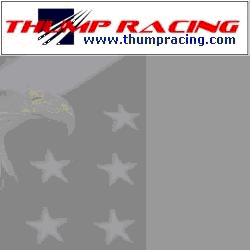The devil is in the details.
Always.

True, but if I'm going to think about swapping away from OE to anything I'm going to try to get the most out of my mod. Not a whole lot different than giving thought to TA length if I was going to "roll my own" TA.
Of course. But many people don't have the resources or possibly even the expertise (since what we're talking about here requires fabrication capability) to roll their own in the way you're speaking of here.
Predictable is what you want. Actually defining that probably not as easy.
This is certainly true, and I've been thinking about that a bit. For instance, AS% ultimately translates to forces in the rear, but you've got springs back there that exert forces that are position-dependent. The AS% curve that you'd design would have to account for that.
You can still make minor adjustments that should be clearly noticeable. See my previous post.
Yeah, and that's
very interesting. And it raises the question: do the existing aftermarket UCA relocation brackets allow you to position the UCA in the way you described (assuming no change in the differential-side pickup point)?
Noise and vibrations are not confined to the axial direction of either a UCA or a TA. You'll get vertical and lateral bending modeshapes and (mostly in the case of a TA) one or more torsional modes. Even poly will take some of the sting out of suddenly applied axial forces and axial vibration modes (in a UCA) and vertical and lateral forces at a TA's chassis side pickup.
This is certainly true, but the
magnitudes of the forces involved are dominated by the axial ones. NVH is, essentially, the result of instantaneous change in the forces being seen by the endpoint, and I would expect the force that dominates in terms of longer-term magnitude to also dominate in terms of the magnitude of instantaneous changes to it.
That might not be the case here, but it's what I would expect.
Given the PA sweep with a TA being less affected by bushing distortion, you could easily justify a softer TA bushing than you'd need for a UCA and a similar level of PA control.
Right. And this strikes me as being one of the major benefits of the TA relative to the UCA when one is concerned about NVH.
A little while back I saw a video that shows just how much the OE UCA bushings deform under conditions of wheel hop - it's an unbelievably huge amount, which implies huge PA changes separate from the effects of ride height variation. I should have copied the link, because I can't find it now that I want to link to it. I'm pretty sure it was in one of the threads about the Whiteline UCA, but I don't even remember if it was here at S197forum.com.
Yeah, I saw that video. It was very impressive, to say the least.
Handling forums tend to be that way. If you aren't hardcore interested you don't bother to even investigate the topics, and if you're a 'regular' because you are it's because it's priority #1.
I think that
vastly oversimplifies things. You have a wide spectrum of people who are interested in the topic of handling, everything from those who are fabricating their own race cars and don't care
at all about NVH, to those whose primary concern is NVH but who want to maximize the handling performance of their car while keeping NVH minimized. Each person has their own specific tolerance of NVH.
But no matter where you are in that spectrum, an understanding of the engineering behind the suspension and the principles that one can use to determine how best to achieve a given level of handling is
highly beneficial, and so I would expect anyone who has an interest in handling and at least some interest in the engineering behind it to be interested in this forum. I certainly am, and as I indicated previously, my tolerance for NVH is going to be on the low side.
Now the TA-equipped car I did drive was a daily-driven moderate ESP car with springs somewhat stiffer than stock but not particularly heavier than barbaro's in terms of wheel rate (or stiffer than mine, in my similarly sprung, similar-weight 1979 Malibu, for that matter), and it may have had a little more sta-bar than OE. I'd never driven on R-compound tires before either, but I was consistently well within a second at autocross as the car's owner starting with my second run in his car. I wish that experience had been more recent (though not the reason I ended up with the opportunity), but the memory of how easy it was to drive that car hard is still clear.
It'll be interesting, to be sure, to see what benefits the torque arm brings to my car once I put it on (which won't be immediately -- I want to experience the car in all its stock glory before I make suspension modifications).




